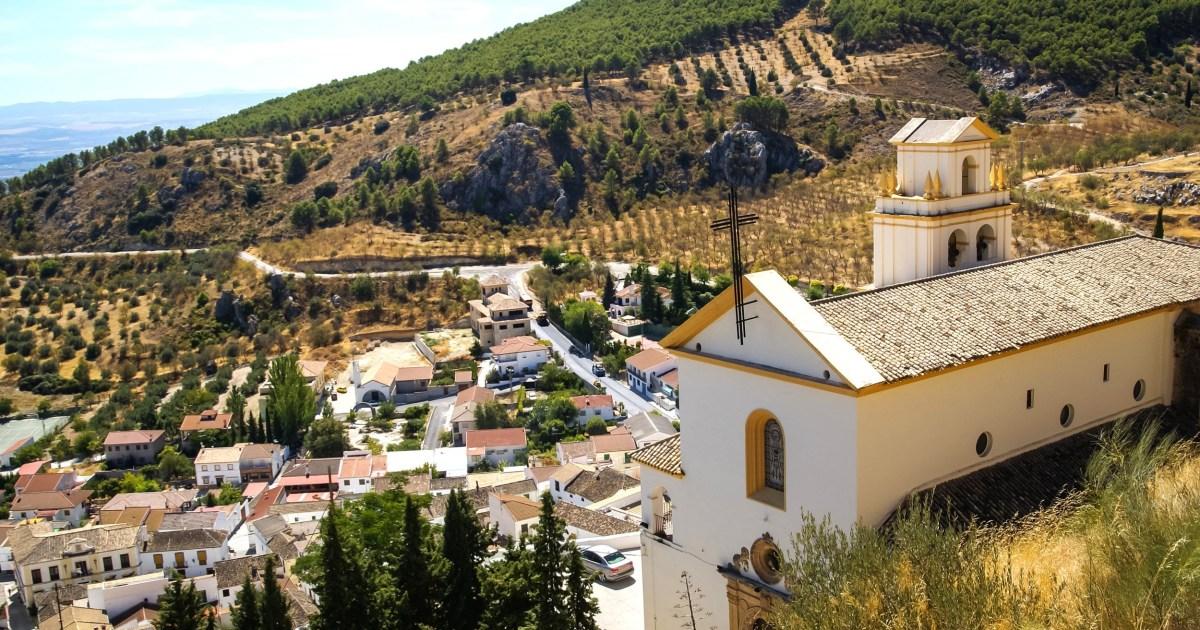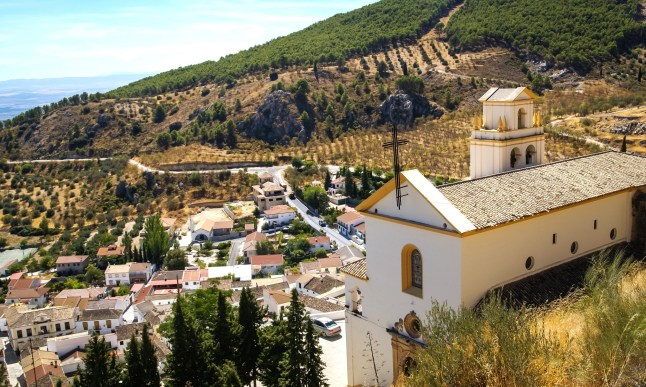
Many of the ‘white villages’ of Andalucia have become ghost towns (Picture: Shutterstock / siete_vidas)
Ravaged by civil war and abandoned after failed investments, many of Andalucia’s most beautiful pueblos blancos have become ghost towns.
The famed white hilltop villages are one of the best reasons to visit this part of southern Spain, but in recent years, they’ve struggled, as younger generations move to cities and beach resorts in search of better lives.
For every Nerja and Estepona, where geraniums bloom over the whitewashed walls of booked-out Airbnbs, there’s a shuttered settlement that sees just a handful of tourists each summer.
For every Ronda and Frigiliana, where squares heave and sangria sells out, there’s a deserted town centre with boarded-up shops. Houses are empty; the fabric of community long since frayed.
But, as Italy’s €1 housing scheme and Extremadura’s €15,000 digital nomad grants prove, things can be done to draw tourists back to forgotten regions.
An accidental adventure
Sign up to The Getaway newsletter
Fuel your wanderlust with our curated newsletter of travel deals, guides and inspiration. Sign up here.
When Ian Rutter and Andrew Watson packed their bags and moved to Andalucia, they thought they were embarking on a year of adventure away from the UK after the 2016 Brexit referendum.
‘We were fed up in London and just felt like a break, but almost as soon as we got here, we knew we wouldn’t go back,’ Ian tells Metro.
The couple found a new home in Moclín, a hillside village about 30 minutes’ drive from Granada, with views of the snow-topped mountains of Sierra Nevada.
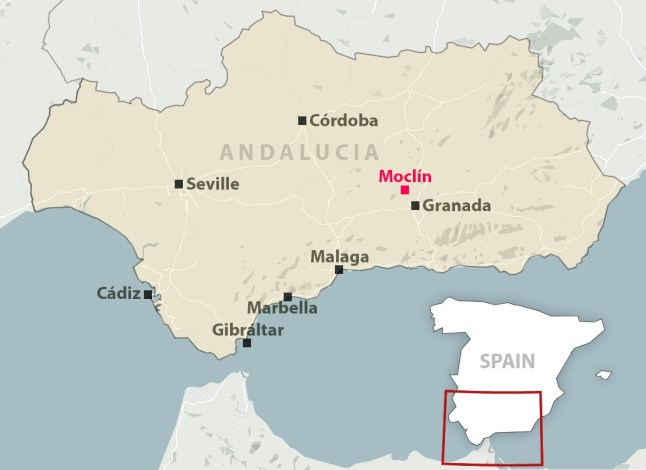
Moclín, a hillside village about 30 minutes’ drive from Granada (Picture: Metro)
Andrew recalls that the village had an ‘amazing feel’ to it, but Moclín was having a tough time.
Many holidaymakers with second homes had not returned after Brexit, and older residents were fighting a losing war of attrition.
In 2010, a census found 4,237 people were living in Moclín. Last year, there were 3,529.
‘In rural Spain, unless you’re in construction or agriculture, there’s very little work,’ says Ian.
‘Young people go to the cities, to Malaga, Barcelona, Madrid, for university and then to find jobs. More often than not, they don’t come back.
‘What you find is a real apathy, a loss of confidence, and a loss of belief. People become resigned to the idea that the children will leave and the grandparents will die. It’s a unique sort of despair, and it’s very difficult to get out of that.’
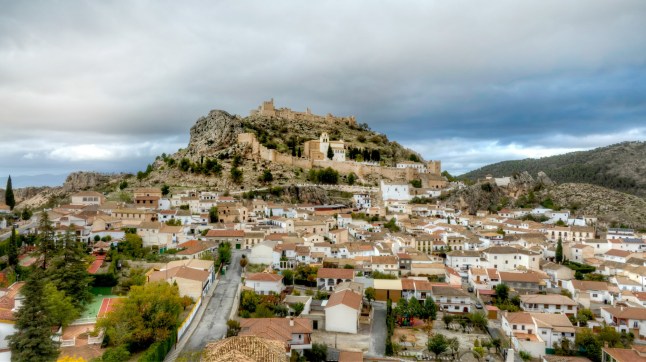
In 2010, a census found 4,237 people were living in Moclín; last year, there were 3,529 (Picture: Shutterstock / Antonio Ciero Rei)
They are full of fascinating history, magnificent architecture, and an abundance of culture, but without help, many of these villages could soon disappear.
The ‘real’ Spain
Determined to breathe new life into their adopted home, Ian and Andrew founded Granada Cultural Holidays, a travel agency that offers immersive experiences showcasing the authentic side of Andalucia.
They opened a small B&B and Casa Alamanda Moclín, a larger tourist townhouse that was renovated by Alan Carr and Amanda Holden on BBC One’s Amanda & Alan’s Spanish Job in 2024.
After the show aired, tourists from the UK flooded in.
‘They are staying in the village, and buying food and drink here. I think it’s been a great step forward for Moclín’s social life,’ Mario Costela Martín, the owner of Bar La Plaza, says.
Fellow local bar owner, Mari Cruz Roman Costela, agrees: ‘[The show has given] a lot of visibility to the rest of the world, especially in the United Kingdom, and we’ve noticed an increase in the number of foreigners visiting us over the last year.’
Ian and Andrew were conscious that they wanted to show the utmost respect to Moclín, and bring its inhabitants along every step of the way.
To create genuinely authentic experiences, they involved locals in organising everything from fiestas and flamenco lessons to traditional cookery courses and mosaic-making.
Ian taught English at the village’s Women’s Association, a fast track to making friends and getting involved in the community, and both he and Andrew learned Spanish.
‘English is not spoken here, so you have to be prepared for that. But it’s the best thing we’ve ever done,’ says Ian.
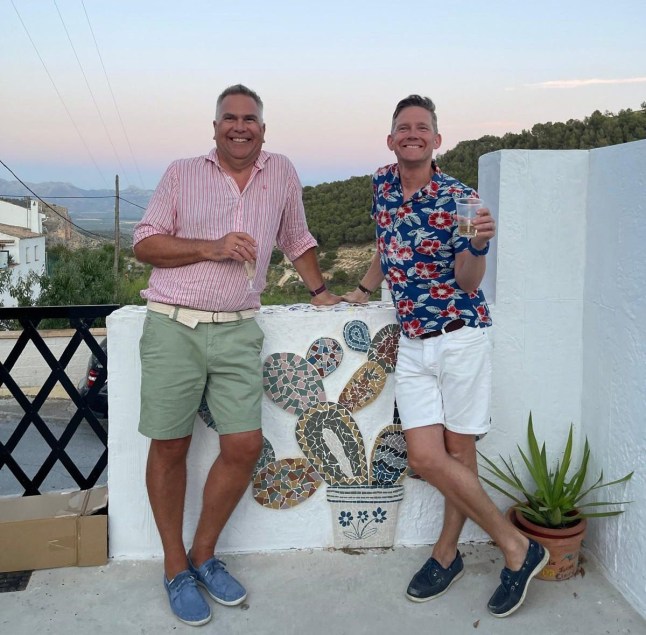
Ian Rutter and Andrew Watson moved to inland Spain and haven’t looked back (Picture: Supplied)
Andrew adds: ‘Here, you’re trying the local food, the local wine, the local olive oil. You’re not going to find that in a tourist restaurant on the coast.
‘It’s something a lot of people are missing out on. If you really want Spain, you have to go inland.’
The story of pueblos blancos
The ‘white towns’ of Andalusia are a series of whitewashed towns and villages in the northern part of the provinces of Cádiz and Málaga in southern Spain, mostly within the Sierra de Grazalema Natural Park.
Known for their beautiful architecture, these settlements were built to defend communities against invaders during centuries of conflict.
Historians say the town’s distinctive colour was created with cal, a sort of whitewash from slaked lime that helped to keep homes cool in the searing Andalusian summer.
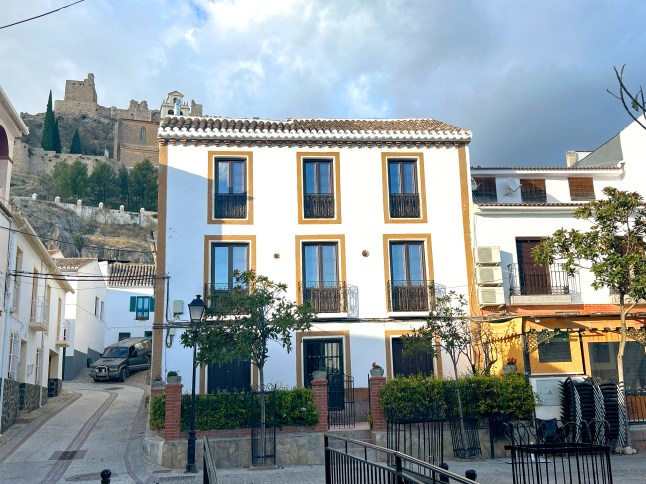
Ian and Andrew’s townhouse (Picture: Supplied)
Today, after decades of depopulation, most are home to just a few thousand people, but the villages remain a point of great cultural pride.
Traditional production of Andalusian whitewash was awarded UNESCO status in 2011, and the Museo de Cal de Morón, southwest of Seville, demonstrates the artisanal process for visitors.
The best way to explore the region is on a road trip, navigating winding roads that reveal how traditional ways of life endure here.
Start with well-known coastal spots such as Nerja or Estepona, then travel inland to Ronda, Arcos de la Frontera, Casares (and of course, Moclín).
The 5 best lesser-known Spanish destinations tourists often miss
Spain’s battle against overtourism has been making headlines for years, with its popular cities and towns struggling to manage the influx of visitors overwhelming local communities.
Last year, Barcelona locals resorted to using water guns to deter rowdy tourists, while in Madrid locals protested over rising rent prices, which many attributed to overtourism.
Serious’ tourism rules have been introduced to reduce the strain on residents, including restrictions on public drinking, partying, and the use of short-term rental services like Airbnb.
Most recently, Mallorca residents have written an open letter to tourists, urging them not to come to the island, as they ‘face the worst summer in the history of Mallorca’.
But despite the deluge of visitors in popular areas, some regions of Spain remain relatively untouched.
If you want to avoid the crowds, Metro has rounded up five lesser-known destinations to visit instead.
Arrow
MORE: Europe’s highest train station has ‘magical’ views at 3,454m above sea level
Arrow
MORE: I went to Pride with my parents for the first time at 35 — it changed everything
Arrow
MORE: Family of Brit facing 20 years in Spanish prison fear police ‘ignoring evidence’
Comments
Add Metro as a Preferred Source on Google
Add as preferred source
The Getaway
Fuel your wanderlust with our curated newsletter of travel deals, guides and inspiration.
